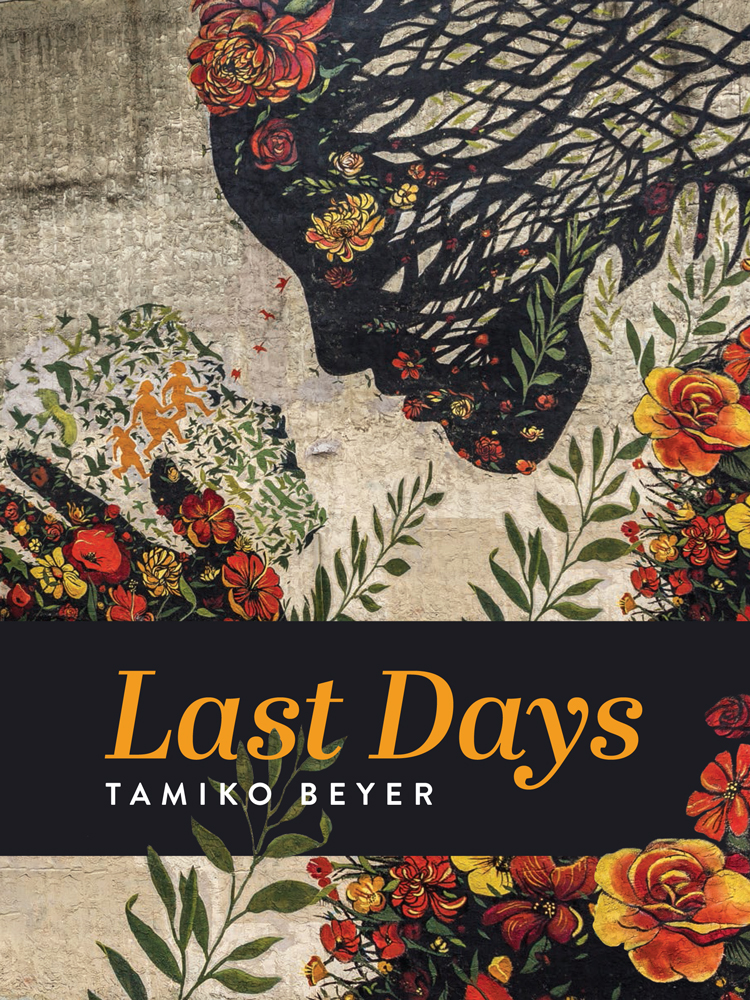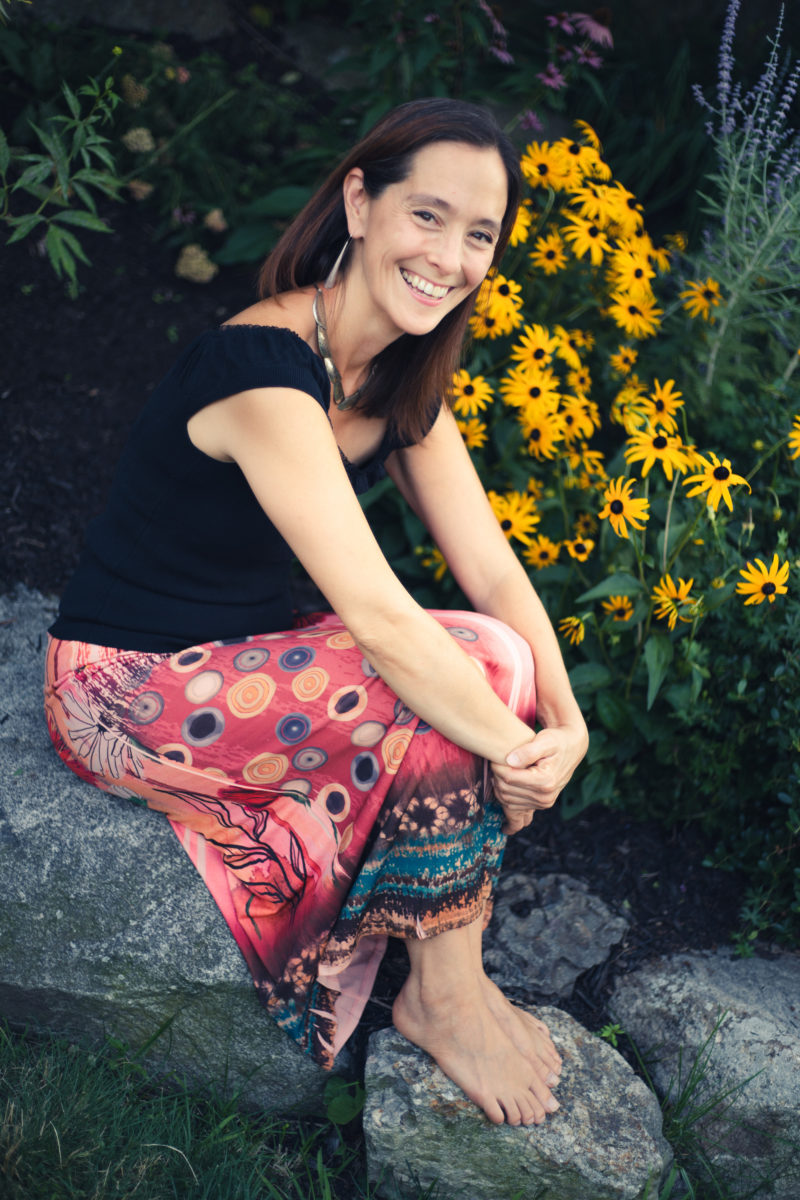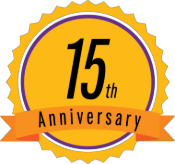When did you first encounter poetry? How did you discover that you wanted to write poems?
I first encountered poetry in the books my parents read to me as a child—nursery rhymes, folk tales, picture books with one or two lines on each page. In elementary school, my dad helped me memorize Shakespeare soliloquies when I fell in love with the music of the language, even when I didn’t really understand the meaning of the words.
Shortly after, I realized I also liked writing my own poems. In high school, I was lucky enough to have teachers and mentors who taught me early on that: 1). it is possible to be a poet in the world and 2). writing poetry is a life-long craft.
Do you have a writing routine? A favorite time or place to write?
I do my best work in the mornings. Right now, I don’t have a writing routine, but the ideal routine for me is waking up, pulling a tarot card, doing yoga and meditating, taking our dogs for a walk to the river, and then reading and writing for a few hours. One day, perhaps soon, I hope to return to such a routine. I like to write at my desk or the kitchen table, both of which face east, as the sun makes its way through the morning sky.
Where do your poems most often “come from”—an image, a sound, a phrase, an idea?
Who knows! My poems often start from prompts—given or received. Or from freewrites that feel channeled. I pull out phrases that call to me musically and build from there.
My poems are a way for me to engage with the world as it is—a world built on systems of oppression and exploitation. No matter where my poems start, they are almost always a way for me to name and grapple with the facts and traumas of living as a queer multiracial ciswoman inside racial capitalism and heteropatriarchy—and/or a way to dream into and build a different kind of world for all of us to live in.
Which writers (living or dead) have influenced you the most?
The writers who were the bedrock in my development as a young poet were Joy Harjo, Adrienne Rich, Audre Lorde, and Mitsuye Yamada. Today, I am inspired and influenced by so many folks—mostly Black women—including adrienne maree brown, Alexis Pauline Gumbs, Cathy Park Hong, Layli Long Soldier, Claudia Rankine…folks writing at the intersection of resistance and revolution, liberation and literature.
What excites you most about your new collection?
Last Days was inspired by and written for my comrades and co-conspirators: all the activists, organizers, healers, teachers, and artists who are doing the daily work of creating change, of building new worlds and new ways of relating to each other and ourselves, of tearing down harmful structures and creating healing ones. So I set out to launch the book in a way that would get this book in the hands of these folks.
I ended up forging an alternative model for releasing a book: one grounded in collaboration and solidarity instead of competition and operating within a gift economy instead of a capitalist approach.
That looked like raising funds so that I could give away both Last Days and the poet and performance artist Gabrielle Civil’s new chapbook, ( ghost gestures ). It was a huge project to get the word out and then actually send the books to more than 250 organizers, campaigners, activists, cultural workers, and healers. But I loved doing it, and am so thrilled that people engaged in social justice work from across 32 states and two countries now have these books in their hands.
And I wrapped up my book launch with an event called “Seeds Bursting Open in Fire,” taken from a line in the book. I brought together other writers, organizers, a dancer, and a graphic artist. Together with more than 60 attendees, we learned from and inspired each other, wrote together, and catalyzed each other into action. It was more beautiful and magical than I had imagined it could be.
My hope is that this project inspires other writers and artists, especially BIPOC folks, queer people, disabled people, and others who have been marginalized in the literary and art communities, to develop new ways of releasing work into the world. There is a myriad of ways we can dream up to engage with capitalism differently and to create and deepen community. That’s what I’m most excited about.

Equinox
by Tamiko Beyer
Dear child of the near future,
here is what I know—hawks
soar on the updraft and sparrows always
return to the seed source until they spot
the circling hawk. Then they disappear
for days and return, a full flock,
ready. I think we all have the power
to do what we must to survive.
One day, I hope to set a table, invite you
to draw up a chair. Greens steaming garlic.
Slices of bread, still warm. Honey flecked with wax,
and a pitcher of clear water. Sustenance for acts
of survival, for incantations
stirring across our tongues. Can we climb
out of this greedy mouth,
disappear, and then return in force?
My stars are tucked in my pocket,
ready for battle. If we flood
the streets with salt water, we can
flood the sky with wings.
“Equinox” (poem) from Last Days by Tamiko Beyer, Alice James Books, 2021.

Tamiko Beyer is the author of the poetry collections Last Days and We Come Elemental. Her poetry and articles have been published widely, including by Denver Quarterly, Idaho Review, Black Warrior Review, and Georgia Review. She has received awards from PEN America and the Astraea Lesbian Writers Fund, among others. She publishes Starlight and Strategy, a monthly newsletter for shaping change. A queer, multiracial social justice communications writer and strategist living and writing on Massachusett, Wampanoag, and Pawtucket land, she spends her days writing truth to power. Learn more at tamikobeyer.com
